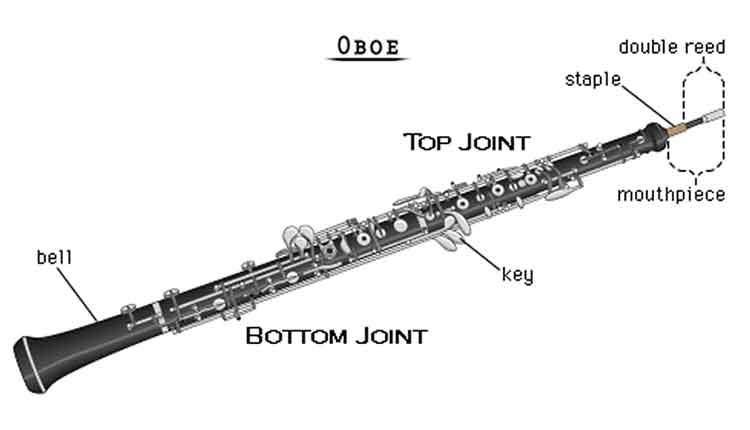I did not realize how fortunate I was as a child until I started teaching oboe privately. My parents bought me a new wooden oboe and found a good source of hand made reeds for me that were provided for 6 years. Many students are not so lucky, thanks mom and dad!
The first thing I always check is the kid’s instrument. Screws are supposed to be tight on almost everything we use daily but not the oboe. If the adjustments are too tight they hold the keys open and the student must use incredible finger pressure to get them to close. A very good book on the subject is Adjusting the Oboe and English Horn by Carl Sawicki, who is a fantastic repairman. This book can be found at Charles music. If the band director has no time to study the book, which is very likely given their hectic schedule, provide it for the students. Once understood it is fairly easy to keep the instrument in proper adjustment.
Reeds are another important issue. The machine made reed is usually a disaster. Look for a professional musician or even a college student who makes extra money selling reeds. Or find a teacher who will make reeds for the student and encourages them to make and/or adjust their own. I have a few 7th graders that make pretty decent reeds.
For the beginner, one hopes for a reed that has a small opening and is easily blown in order to keep the embouchure in place. I ask the student to take a deep breath inhaling through the mouth using the syllable “hoo”, as in the word hoe, not who. Don’t let them breathe through their noses, it is such a bad habit and hard to correct with some kids.
I then ask them to blow as if they were blowing up a balloon. The jaw stays down and is flat across the front, the corners of the mouth are firm and even the tongue is put in the correct position. I also ask students to practice with a mirror forming a whistle. They can feel and see the firm muscles at the corners of the mouth. These muscles need to be developed to avoid the “smile” embouchure.
Another topic is a choice for Solo Ensemble. A book I refer them to is called Jay Arnold: Oboe Solos “Everybody’s Favorites”. This book has a variety of styles and difficulty levels from Bach and Handel to Mozart and Telemann at the end of the book. I recommend it for all my students. Make sure they choose a piece that has a few beats rest throughout. Unless they have terrific endurance and nerves of steel, they will surely run out of air, or worse, be filled with stale air, before the solo ends, resulting in sheer disappointment.
One final item is a method book to encourage more practice. I am currently using a book called Oboe Student by Blaine Edelfsen, published by Belwin/Warner Brothers. It has 3 levels of books and teaches all the correct fingerings and works in many key signatures to challenge the student daily. Teach the student to roll the finger off the half-hole key, not pick up the first finger. Use the forked F only when preceeded or followed by a note that uses the ring finger, like D or Eflat. Otherwise use the regular F, which is more in tune and has a prettier tone. And do not add the Eflat key when playing the forked F, it changes the pitch and is a terrible habit that is difficult to correct. Good Luck!
Sally Pituch is currently the English hornist /2 oboist in the Michigan Opera Theatre Orchestra and a member of the Detroit Chamber Winds. Prior to her current position Sally was English hornist/associate principal oboist with the Honolulu Symphony for 9 years and was also a member of the Dallas Opera Orchestra.
For more great tips and techniques on Oboe and other instruments as well as practical teaching advice for band see:
Heff’s Band Aides
A compilation of techniques presented for the benefit of the aspiring music Teacher!


